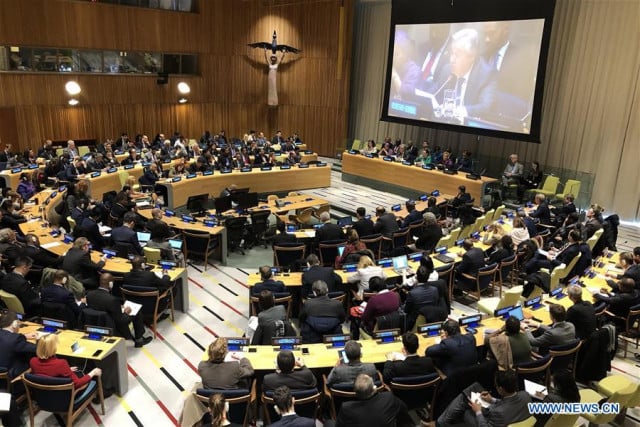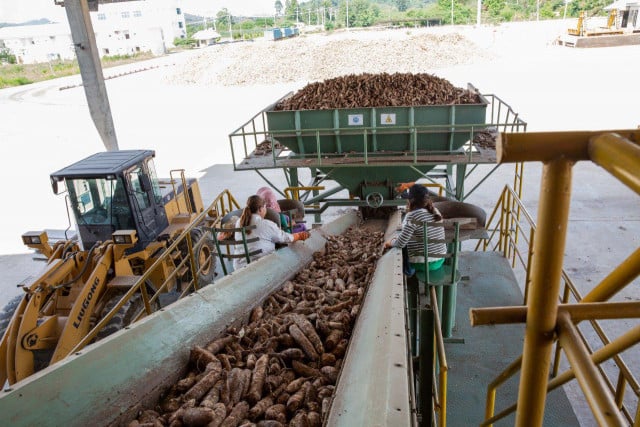In Fight for Malaysian Forest, Can Activists Replicate a Win?

- By Cambodianess
- January 7, 2022 12:00 PM
Community conservationists in Selangor are working to save the Shah Alam forest from planned development by showcasing its threatened biodiversity, disproving government claims and building support. Can they repeat an earlier victory by other forest defenders?
Early one Saturday morning in November, a team of six conservationists set out from a restaurant in Shah Alam, the capital city of Malaysia’s Selangor State, and headed for the forest. The team included a reptiles researcher, a topographer and two consultants assisting with setting up camera traps, which photograph wild animals that trigger a motion sensor. There were also two members of the Shah Alam Community Forest Society, which had brought the team together to map and survey the terrain and biodiversity of the rainforest.
The Shah Alam Community Forest is a rare green space in highly developed Selangor. The forest is home to flowering and semi-evergreen trees, and endangered animals. It forms a crucial potential wildlife corridor between the Bukit Cherakah Forest Reserve to the north and the Shah Alam National Botanical Garden to the south. While visitors regularly hike its trails, the Shah Alam forest ecosystem is largely undisturbed by human activity.
However, this may soon change. Surveys by the SACF Society show the biodiverse forest is threatened by the surrounding urban landscape. It lies in the centre of Shah Alam, a short walk from several busy streets and dense rows of restaurants and retail outlets. Beside the forest’s entrance, rows of identical white houses that make up a development called Setia Eco-Park are under construction.
As the conservation team enter the forest, the drone of construction follows them. The noise is still present 10 minutes later when they spot a dusky leaf monkey carrying its baby high in the treetops. They stop to take photos, but the endangered primate is skittish and moves deeper into the forest. Farther down in the canopy, a group of long-tailed macaques, a vulnerable species, sit on a tree beside the trail. They are nonplussed as they watch their human cousins take photos and videos of them.

Deeper into the forest, the sounds of construction and the humid heat of the city fade away completely. This is one of the things Alicia Teoh, the society’s secretary, loves about visiting: “You can actually hear the forest come alive.” By day, Teoh works at a church, but her work with the SACF Society, which she calls a group of “ordinary folks”, has given her a fount of knowledge about the forest.
Later, she stops to point out the warble of gibbons. According to Teoh, this forest lies not far from where scientists first observed white-handed gibbons, which are now endangered. These gibbons are among nearly 300 animal species living in the 174-hectare urban forest, of which the International Union for Conservation of Nature lists more than 30 as threatened, vulnerable, endangered or critically endangered.
Teoh considers herself privileged to have joined several of the conservation group’s forest surveys. “We got to learn about the different species. We learn how to spot wildlife,” she says. “That’s really enriching.”
During this particular outing, the team set up two new camera traps, adding to the four they had set up previously. Within the first six days of “camera soaking”, the original four cameras captured a large Indian civet, a slow loris, a mouse deer, a Malayan porcupine and a wild pig.
“You can actually hear the forest come alive.”
Steven Wong, a reptiles researcher and nature guide who joined the group, hopes the new cameras will also catch a serow—an antelope-like mammal—as well as tapirs, pangolins and wild barking deer. The presence of these animals in the forest “would be a delight,” he says. More importantly, they are protected species under Malaysia’s Wildlife Conservation Act 2010, “which would also mean that the forest has to be protected as these threatened animals live in there”, Wong adds.
Documenting the forest’s biodiversity is part of the SACF Society’s strategy to save the forest from a planned development by the Selangor State government, which would see a road, cemetery and mixed development cut through the Shah Alam forest. The state government claims it is not a forest reserve and that the land was degazetted in 2006 under the previous state administration.
In a press statement on 24 September, Hee Loy Sian, Selangor’s executive councillor for tourism, environment, green technology and indigenous affairs, cited document PW1443, which refers to a map of an area to be degazetted, as evidence that the land was excised from protected forest reserve.
The following day, the SACF Society released a statement refuting Hee’s claim. Teoh and other society members had looked through years of the Selangor gazette—a public record of state government notices—and found no evidence of the alleged degazettement.
“The famous PW1443,” Teoh says. “We already know about this document—we actually have it in hand, because we did our research.”
The document is “just a map” of a proposed plan to degazette, but under the National Forestry Act 1984, Teoh explains, it’s “just a draft document”.
“It is not a degazettement notice until it is published in the Selangor gazette,” Teoh says.

A month later, Hee told a local newspaper: “The NGOs should ask the previous state government about the move to degazette the land and why a notice was not published; those processes were not done by the present government. …It is also not feasible for the state to take back the land, as it involves a huge sum of compensation. Developers can also take legal action against us.”
As of early December, Hee has not responded directly to the SACF Society’s press statement, nor to requests for an interview by New Naratif. According to Teoh, a meeting scheduled for 22 November between the SACF Society and Hee was cancelled on 10 November without explanation or a rescheduled date from Hee’s staff.
Whether the planned road and cemetery end up being built, urban development is already threatening the forest and its inhabitants.
While the future of the Shah Alam Community Forest is uncertain, development is already encroaching on this thin stretch of primary rainforest.
“I feel so heartsick seeing this,” Irene Poh, a 59-year-old retiree and SACF Society committee member, laments at the sight of aluminum fence posts snaking through parts of the forest. These posts and their messy concrete foundations are the beginnings of a security fence built by Setia Eco-Park, which advertises itself as an “eco-haven surrounded by natural beauty”.
Teoh also worries about the fencing. If it extends too close to the forest floor, it will block the paths of small mammals who could use the forest as a natural corridor. Whether the planned road and cemetery end up being built, urban development is already threatening the forest and its inhabitants.
Fortunately, another recent battle to preserve Selangor’s forests ended in a partial victory. Some members of the SACF Society are looking to that movement for lessons.
The Fight for KLNFR
Elsewhere in Selangor, about 35 kilometres south of the Shah Alam Community Forest, lies the Kuala Langat North Forest Reserve, a biodiversity hotspot made up mainly of peat swamp. Peatlands help preserve biodiversity, minimise flood risk and act as carbon sinks, a natural means to climate change mitigation. The forest reserve also has been home to the indigenous Temuan people for more than 150 years.
In February 2020, the Selangor State executive council proposed the degazettement of more than 931 hectares of the Kuala Langat North forest, with plans to licence the land to a local real estate developer. This would have excised 97% of the 958-hectare forest reserve, leaving only a tiny sliver of forest. In November 2020, the state legislature voted unanimously against the plan, opting to maintain KLNFR as a forest reserve.
Then, in August 2021, executive councillor Hee announced a new plan to degazette more than 500 hectares, or 45%, of the forest reserve. The decision, Hee said, was made by the state executive council in May. Hee framed the revised plan as a concession to the public and to the indigenous communities living in the forest, though it was not disclosed to the public or the state legislature.



The concession was little comfort to the Defend North Kuala Langat Forest Reserve (PHSKLU) Coalition, who since October 2020 had been rallying the public to pressure state lawmakers to reject the degazettement. Public outrage on social media only increased as more information emerged about Gabungan Indah, the company that had received the licence to spearhead the development project. Gabungan Indah had only been incorporated in November 2020, and had only one ringgit (US$0.24) in capital, according to a company file from the Companies Commission of Malaysia. Vibrantscape, Gabungan Indah’s sole shareholder, is in turn owned by Perdana Parkcity, a prominent property developer.
PHSKLU were not done fighting. On 8 September, 10 members of the coalition travelled to the Selangor State Secretariat to deliver a formal request for the state to revoke the degazettement. In the age of digital communications, coalition members believed hand-delivered documents would be less easy to ignore.
“We never email or we never post it [by mail] because we believe in sending it and get the [document] stamped, to show that we did send this out,” says Suresh Kumar, a coordinator for the human rights group Suara Rakyat Malaysia (SUARAM) and PHSKLU member.
“Climate change concerns have made more people aware of the urgent need to protect our remaining forests to mitigate the impacts of global temperature rise.”
However, about 20 police blocked the activists from entering the state secretariat. “This is the first time that we [have] been blocked from send[ing] a memorandum—that’s quite shocking for us,” says Shaq Koyok, a Temuan artist and coalition member who grew up in an Orang Asli village near KLNFR.
Eventually, five members of the coalition were allowed to meet with an aide to Selangor chief minister Amirudin Shari. After the meeting, the coalition held a press conference outside the secretariat. A video from that day shows Shaq and Suresh speaking over the rumble of traffic on a road lined with police cars and vans. The group were mulling their potential next steps, such as applying for a judicial review in the Malaysian High Court against the decision to degazette KLNFR. Later that day, though, before they could act, the chief minister unexpectedly announced that the forest would be re-gazetted—restored as a protected forest.
Shaq, who first witnessed deforestation inside KLNFR when he was 9 years old and has been part of various fights to defend indigenous land for 15 years, says a success like this is rare.
“This is the biggest score for us,” he says.
The Game Plan
The PHSKLU coalition doesn’t only include environmentalists and indigenous rights groups; it also comprises the performing arts collective Five Arts Centre, the youth activist group MISI Solidariti and rights group SUARAM, with a total of 17 organisations. This diversity, according to June Tan, a producer affiliated with the Five Arts Centre, has enabled the coalition to pursue a “multi-pronged strategy”.
“The conversations [at our meetings] are very rich because the different groups have different audiences and different access to resources,” Tan says.
In a typical coalition meeting, members discuss the media, policy, politics, and tactics to access powerful people and institutions, she adds.
The groups within PHSKLU are also diverse in age range. Older members gather facts and figures, while younger members devise creative campaigns. MISI Solidariti created an interactive campaign called “Postcards From Tomorrow”, which encouraged people to send digital and physical postcards voicing opposition to the degazettement to the Selangor chief minister.

Back in Shah Alam, the SACF Society has taken note of these tactics. “In the KLNFR, we saw community groups of various interests—not just environment—supporting the cause,” Teoh says. “I believe it’s because climate change concerns have made more people aware of the urgent need to protect our remaining forests to mitigate the impacts of global temperature rise.”
The mainstreaming of the climate crisis in Malaysia is a factor the PHSKLU coalition also recognise as a factor in their success. “A lot more people care about environmental issues,” says Nicole Fong, a 26-year-old campaigner with Klima Action Malaysia, a youth-led climate justice group. “It’s become normal to bring it up and to talk about it with your friends or community or network.”
The growing popularity of environmental issues was evident in the immediate backlash generated by news of KLNFR’s first proposal for degazettement in February 2020. That month, the Coalition for the Protection of Selangor’s Forests gathered 14,422 individual objection letters and 29,080 signatures through an online petition in just 20 days. Public sentiment remained in favour of saving the forest, with over 100,000 people signing a Change.org petition to scrap the development plan. Tan, the producer and activist, says supporters of the campaign sent about a thousand emails to Selangor state lawmakers demanding to know if they supported or rejected the degazettement.
The following November, several state assembly members pledged their support for the campaign, after which the state legislature voted unanimously to preserve the forest.
This massive support gives Teoh hope that the Shah Alam Community Forest can be defended: “We have learned [from KLFNR] that when the public rallies together in a concerted effort to protect a forest, it can be saved.”
By Deborah Germaine Augustin, New Naratis. Produced as a part of the SEAFORE ASEAN Masterclass project, with support from IWPR















